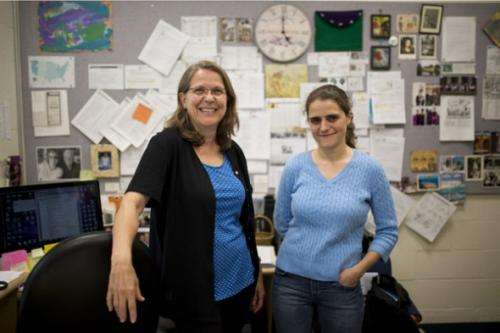Ancient bacteria go under the lens

Every fourth breath you take comes from cyanobacteria, which populate the planet's waters. Progenitors of these microscopic, photosynthetic organisms are believed to have been the first organisms to release oxygen into the atmosphere. Their evolution nearly 3 billion years ago is thought to have enabled all aerobic life on Earth.
But the same process that accounts for one quarter of the planet's breathable oxygen has also turned cyanobacteria into one of the most poorly controlled forms of water pollution, experts say. Rising ocean temperatures and acidity have led to devastating blooms of marine cyanobacteria around the globe, overwhelming other native species.
Despite these problems, researchers still don't have an easy way of studying cyanobacteria through genetic analysis, according to Jacqueline Piret, an associate professor of molecular microbiology. Piret recently co-authored a research paper on the subject in the journal Nature along with former student Desislava Raytcheva and colleagues at the Massachusetts Institute of Technology and the Baylor College of Medicine.
To overcome these challenges, the research team is investigating a virus called Syn5, which infects a cyanobacterial species. "A bacteriophage virus offers an opportunity to engineer a vector for carrying out genetic manipulation in the host organism," Piret explained. By tweaking the host genome through controlled viral infection, the researchers can tease out the functions of particular genes, such as those involved in the harvest of light energy for photosynthesis.
But in order to use the bacteriophage to their advantage, Piret's team first needed to understand its structure and behavior, as it was still unclear how the virus assembled and went on to infect its host.
For her doctoral dissertation, Raytcheva used painstaking experimental techniques to work out Syn5's structure, which turned out to be rather unique in that it has a horn protruding from the virus' exterior shell. "Very few other viruses are known to have a similar structure," she explained.
In 2009, the researchers at Northeastern and MIT began collaborating with their colleagues at Baylor College of Medicine, which had developed an advanced microscopy technique. The method allowed them to see in almost real-time and with striking clarity the Syn5 assembly process that Raytcheva had pieced together.
Piret noted that the imaging data complements Raytcheva's work, pointing to the two-pronged approach to get to the assembly process. "You need physical evidence," she said, "and then you need biochemical information about the intermediates."
This work is an important step toward understanding how cyanophages infect and assemble inside their hosts. That knowledge, said Raytcheva, will be critical for developing methods for both studying and controlling cyanobacteria.
More information: www.nature.com/nature/journal/ … ull/nature12604.html
Journal information: Nature
Provided by Northeastern University











.jpg)







